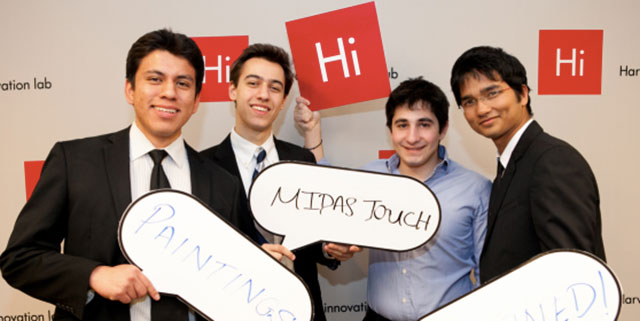A team of Harvard students have joined together with the aim of making art accessible to the visually impaired by using 3D printing as means to reach this goal. In an interview with Venture Beat, one of the project’s Ivy League students, Constantine Tarabanis, states that the fundamental idea behind Midas Touch – the name given to the project – is to make the world of (2D) art available to everybody, whatever their visual capabilities: “We want to bridge the gap between the visually impaired and the visual world of art,” Tarabanis stated.
The plan to fulfill this noble goal sounds relatively simple at first – the basic idea behind Midas Touch is to take a piece of art in a flat form, such as a painting, and then add physical layers on top of it with a 3D printer. However, when further processing the thought of creating a physical equivalent of colours, things start to get tricky – both on a mental and on a physical reality level. Tarabanis explains that this specific issue is not as relevant as one would initially think: “Colour is important, but people with vision tend to overestimate its value.” An issue to resolve nonetheless, and so the Midas Touch team first approached this problem with an understandable solution: they sought to use different textures to denote different colours and hues – such as smooth for blue and rough for red – but in the end were forced back to the starting point, as they came to understand that a specific texture and its correlation to the chosen colour is almost completely irrelevant for a visually impaired person.
Many questions and debates such as the one surrounding colour remain, but despite being early in development, the project has already been notified and awarded internally at Harvard. Midas Touch was chosen as one of the top 10 finalists in the school’s Cultural Entrepreneurship challenge, gaining the project team $5,000, dedicated lab time and some expert mentoring. If they go on to win the grand price, which will be awarded in May, the team will bring home even more funding and an extended residency at the lab to further develop their project.
Whether or not this project will lead to a relevant and, more importantly, real-world usable solution remains to be seen, but it certainly is an interesting approach and a worthy addition to the philosophy of ‘Design for All’.
Source: Venture Beat




